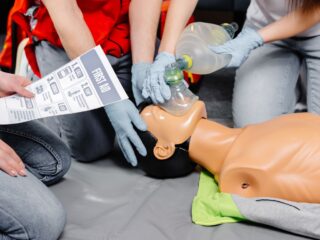
One of the trickiest aspects of the life of a senior with mobility problems can be transportation. Their mobility to visit appointments, social events or shopping may also become a challenge as people get older since their chances of moving fast and safely reduce. Not only is it necessary to ensure safe transportation, but it will also ensure accidents and injuries are prevented. The article will discuss how it is possible to make the travels of the elderly more comfortable and safe, given that they have mobility issues.
Assessing Individual Needs
The initial point on improving safety in transportation is to know the special needs of all seniors. Others may require a walker/cane and others may require a wheelchair/mobility scooter. The evaluation of the necessary amount of support can help to select the safest means of transportation, in addition to the identification of the necessary changes. In some cases, the older individuals may require the provision of special vehicles with lifts or ramps to transport their mobility aids.
One should also remember medical conditions that may affect the safety of transportation. Implementing an option where the elderly in surgeries or chronic conditions are taken around in cars with hospital beds or other assistance could help them. Considering these personal health factors, caregivers and the family members will be able to make sure that the elderly travel in a convenient and safe manner.
Selection of Proper Vehicles
The choice of the suitable vehicle is also a significant consideration because it guarantees the safety of the transportation among seniors with mobility impairments. Low-floor vehicles, having broad doors and entry steps into them, make entering and getting out very easy. In the case of individuals who use a mobility scooter, one is strongly advised to use vans or cars with adequate space to ensure that the gadget is safe. Safety in a vehicle should also consider having operating seatbelts, grab handles and non-slip floor as a way of ensuring that there is less risk of falling during a journey.
The other crucial aspect ensuring safety is the regular maintenance of the selected vehicle. Accidents can be avoided through well operating brakes, tires, and lights. In the case of elderly people who are dependent on their families or caregivers to give them rides, it is of equal significance to teach drivers the special needs of mobility-impaired passengers. The risk of injuries can be lowered by good awareness and driving.
Planning Safe Routes
Ahead scheduling of transportation routes can make seniors not to face irrelevant risks. It is better to have the routes which do not require stairs, steep slopes, or congested localities. Accessibility options can be provided by the public transport systems, although it is always better to check the schedules, accessibility, and waitplaces beforehand in order to be sure that the experience will be less untidy. An adequate road map can eliminate stress and make traveling more predictable and comfortable among the seniors.
Another aspect that is prominent during planning of trips is time management. Extra time to travel will help one not to rush and this may increase the chances of accidents or falls. The additional preparation that might be required by elderly patients who utilize hospital beds or mobility scooters will be the provision of appropriate support during transportation. Considerate route planning helps in physical safety as well as psychological comfort of both the seniors and the caregivers.
Travelling With the Elderly
Caregiver/family members present active support which increases comfort and safety during transportation. Helping board and restraining mobility equipment and offering a strong hand to lean on when necessary can help avoid slips or falls. Even simpler acts, like holding a door open, or assisting in the adjustment of seatbelts, could mean the difference between a positive and negative travel experience of a senior.
Communication plays a critical role in assisting elderly people when traveling. Speaking about the trip, its possible destinations, and various obstacles that may be encountered make the elderly feel better and more ready. Anxiety can be minimized by clear directions and reassurance, and in this case, it is particularly necessary with seniors that can already be vulnerable because of their mobility issues. Positive travelling conditions facilitate physical and emotional security.
Promoting the usual Safety Routines
The establishment and sustaining of practices that are related to safety guarantee the safety of transportation of the seniors in the long term. This involves regular vehicle services, frequent replenishment of mobility aids and ongoing evaluation of health status that can influence travelling. Motivating the elderly to share their needs and preferences when it comes to transportation helps them to be independent and safe at the same time.
Also, training seniors on the safe traveling practice, including the use of the correct seatbelts and movement aids, is an affirmation of these practices. Caregivers would be able to demonstrate exemplary safe behaviors and give gentle remindings when necessary. With time, the safety of transportation is taken into serious consideration, and it minimizes the risks and gives the seniors the power to travel the world more comfortably.












